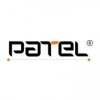
i
ELV Projects Pvt
Ltd
Filter interviews by
ELV Projects Pvt Ltd QA QC Engineer Interview Questions and Answers
13 Interview questions
The ingredients of concrete are cement, water, aggregates, and admixtures.
Cement is the binding agent that holds the mixture together
Water is added to activate the cement and make the mixture workable
Aggregates are the coarse and fine materials that make up the bulk of the mixture
Admixtures are added to modify the properties of the concrete, such as setting time or workability
Examples of admixtures include air-ent...
Wastage Co-efficiency is the ratio of actual wastage to the standard wastage.
Wastage Co-efficiency helps in measuring the efficiency of the production process.
It is calculated by dividing the actual wastage by the standard wastage.
The result is expressed in percentage.
A lower wastage co-efficiency indicates better efficiency.
For example, if the actual wastage is 10 units and the standard wastage is 15 units, the w...
The maximum diameter of steel used on the site varies depending on the specific application and design requirements.
The maximum diameter of steel used on the site is determined by the structural design requirements.
The maximum diameter of steel used on the site can range from a few millimeters to several inches.
The maximum diameter of steel used on the site is typically specified in the project specifications and ...
The tiling works in bathroom should start with proper surface preparation and layout planning.
Ensure the surface is clean, dry, and level
Plan the layout to avoid small cuts and ensure symmetry
Start tiling from the center of the wall or floor
Use spacers to maintain consistent gaps between tiles
Apply adhesive evenly and in small sections
Check for level and adjust as needed
Allow adhesive to dry before grouting
Pre-checking for tiling activity includes surface preparation, layout planning, and material inspection.
Ensure the surface is clean, dry, and level
Check for any cracks or unevenness in the surface
Plan the layout of tiles to ensure symmetry and avoid cutting small pieces
Inspect the tiles for any defects or damages before installation
Check the adhesive and grout for compatibility with the tiles
Verify the correct til...
The design mix of a particular grade of concrete depends on the required strength and other factors.
The design mix includes the proportion of cement, sand, aggregates, and water.
For example, the design mix for M20 grade concrete is 1:1.5:3 (cement:sand:aggregates) with a water-cement ratio of 0.5.
The design mix is determined by conducting trials and tests on the materials used.
The mix should be adjusted based on f...
The grade of received concrete at the site can be determined by checking the documentation, conducting visual inspections, and performing tests.
Check the documentation provided by the supplier, which should mention the grade of the concrete.
Conduct visual inspections to assess the appearance and consistency of the concrete. Different grades may have different characteristics.
Perform tests such as slump test, compr...
The maximum grade of concrete used at our site is M40.
M40 grade concrete is commonly used for heavy-duty structures like bridges and high-rise buildings.
It has a compressive strength of 40 megapascals (MPa) after 28 days of curing.
The mix proportion for M40 concrete is 1:1.5:3 (cement:sand:aggregate).
QA QC stands for Quality Assurance and Quality Control.
QA QC is a set of processes and activities that ensure the quality of a product or service.
Quality Assurance focuses on preventing defects and ensuring that processes are followed correctly.
Quality Control involves inspecting and testing the product or service to identify defects and ensure it meets the required standards.
QA QC is important in various industri...
GGBS stands for Ground Granulated Blast Furnace Slag.
GGBS is a by-product of the iron-making industry.
It is obtained by quenching molten iron slag from a blast furnace with water or steam.
GGBS is used as a partial replacement for Portland cement in concrete production.
It improves the durability, workability, and strength of concrete.
GGBS reduces the heat of hydration and the risk of thermal cracking in concrete.
It...
ELV Projects Pvt Ltd QA QC Engineer Interview Experiences
1 interview found
I applied via Company Website and was interviewed in Feb 2022. There was 1 interview round.
(14 Questions)
- Q1. What do you mean by QA QC ?
- Ans.
QA QC stands for Quality Assurance and Quality Control.
QA QC is a set of processes and activities that ensure the quality of a product or service.
Quality Assurance focuses on preventing defects and ensuring that processes are followed correctly.
Quality Control involves inspecting and testing the product or service to identify defects and ensure it meets the required standards.
QA QC is important in various industries su...
- Q2. Max grade of concrete used at your site?
- Ans.
The maximum grade of concrete used at our site is M40.
M40 grade concrete is commonly used for heavy-duty structures like bridges and high-rise buildings.
It has a compressive strength of 40 megapascals (MPa) after 28 days of curing.
The mix proportion for M40 concrete is 1:1.5:3 (cement:sand:aggregate).
- Q3. Write down the Design mix of the particular grade of concrete?
- Ans.
The design mix of a particular grade of concrete depends on the required strength and other factors.
The design mix includes the proportion of cement, sand, aggregates, and water.
For example, the design mix for M20 grade concrete is 1:1.5:3 (cement:sand:aggregates) with a water-cement ratio of 0.5.
The design mix is determined by conducting trials and tests on the materials used.
The mix should be adjusted based on factor...
- Q4. What is price of particular grade of concrete (RMC) ?
- Ans.
The price of a particular grade of concrete (RMC) varies depending on several factors such as location, quantity, and grade.
The price of RMC is influenced by the location of the project.
The quantity of RMC required also affects the price.
The grade of RMC needed for the project is a significant factor in determining the price.
The price of RMC can range from $80 to $150 per cubic meter depending on the above factors.
- Q5. What are the ingredients of the concrete?
- Ans.
The ingredients of concrete are cement, water, aggregates, and admixtures.
Cement is the binding agent that holds the mixture together
Water is added to activate the cement and make the mixture workable
Aggregates are the coarse and fine materials that make up the bulk of the mixture
Admixtures are added to modify the properties of the concrete, such as setting time or workability
Examples of admixtures include air-entraini...
- Q6. What do you mean by GGBS?
- Ans.
GGBS stands for Ground Granulated Blast Furnace Slag.
GGBS is a by-product of the iron-making industry.
It is obtained by quenching molten iron slag from a blast furnace with water or steam.
GGBS is used as a partial replacement for Portland cement in concrete production.
It improves the durability, workability, and strength of concrete.
GGBS reduces the heat of hydration and the risk of thermal cracking in concrete.
It also...
- Q7. How do you determine the grade of the received concrete at the site (Before Unloading from TM)?
- Ans.
The grade of received concrete at the site can be determined by checking the documentation, conducting visual inspections, and performing tests.
Check the documentation provided by the supplier, which should mention the grade of the concrete.
Conduct visual inspections to assess the appearance and consistency of the concrete. Different grades may have different characteristics.
Perform tests such as slump test, compressiv...
- Q8. What are the pre-checking for the tiling activity?
- Ans.
Pre-checking for tiling activity includes surface preparation, layout planning, and material inspection.
Ensure the surface is clean, dry, and level
Check for any cracks or unevenness in the surface
Plan the layout of tiles to ensure symmetry and avoid cutting small pieces
Inspect the tiles for any defects or damages before installation
Check the adhesive and grout for compatibility with the tiles
Verify the correct tile siz...
- Q9. How do you start the tiling works in bathroom?
- Ans.
The tiling works in bathroom should start with proper surface preparation and layout planning.
Ensure the surface is clean, dry, and level
Plan the layout to avoid small cuts and ensure symmetry
Start tiling from the center of the wall or floor
Use spacers to maintain consistent gaps between tiles
Apply adhesive evenly and in small sections
Check for level and adjust as needed
Allow adhesive to dry before grouting
- Q10. What is Max dia of steel used in the site?
- Ans.
The maximum diameter of steel used on the site varies depending on the specific application and design requirements.
The maximum diameter of steel used on the site is determined by the structural design requirements.
The maximum diameter of steel used on the site can range from a few millimeters to several inches.
The maximum diameter of steel used on the site is typically specified in the project specifications and drawi...
- Q11. What is the unit weight of that particular dia of steel? (based on your previous answer)
- Ans.
The unit weight of steel varies by diameter, typically around 490 lbs/ft³ for structural steel.
Unit weight of steel is approximately 490 lbs/ft³ (or 7850 kg/m³).
For example, a steel bar with a diameter of 16 mm weighs about 0.79 kg/m.
The weight can be calculated using the formula: Weight = Volume x Density.
Different steel grades may have slightly different unit weights.
- Q12. What is Pre-Checking for the painting activity?
- Ans.
Pre-checking is a process of inspecting the surface before painting to ensure it is clean, dry, and free from defects.
Inspect surface for cleanliness, dryness, and defects
Check for any cracks, holes, or roughness
Ensure surface is properly primed
Verify that the surface is suitable for the type of paint being used
Confirm that the ambient temperature and humidity are within the recommended range
Perform adhesion test if ne...
- Q13. List the number of activities in finishing?
- Q14. List the wastage Co-efficiency?
- Ans.
Wastage Co-efficiency is the ratio of actual wastage to the standard wastage.
Wastage Co-efficiency helps in measuring the efficiency of the production process.
It is calculated by dividing the actual wastage by the standard wastage.
The result is expressed in percentage.
A lower wastage co-efficiency indicates better efficiency.
For example, if the actual wastage is 10 units and the standard wastage is 15 units, the wastag...
Interview Preparation Tips
Top trending discussions






Interview questions from similar companies

Senior Engineer Interview Questions & Answers
D.p. Jain & Co. Infrastructure Pvt .posted on 11 Sep 2023
I applied via Naukri.com and was interviewed in Aug 2023. There were 2 interview rounds.

(5 Questions)
- Q1. How many years of experience in Bridges
- Q2. You have to selected for this position
- Q3. Sr Engineer in maharashtra
- Q4. Ab aur kya kya likhu
- Q5. Ye ambition chu-t-iya bnata hau
Interview Preparation Tips
- Pile Foundation

(1 Question)
- Q1. About experience
- Ans.
I have over 5 years of experience in QA QC engineering, focusing on process improvement and compliance in various projects.
Led a team in implementing a new quality management system that reduced defects by 30%.
Conducted regular audits and inspections, ensuring compliance with industry standards.
Developed and executed test plans for software applications, improving functionality and user experience.
Collaborated with cro...
(2 Questions)
- Q1. About experience
- Ans.
I have over 5 years of experience in QA QC engineering, focusing on process improvement and compliance in various industries.
Led a team in implementing a new quality management system that reduced defects by 30%.
Conducted regular audits and inspections, ensuring compliance with industry standards.
Developed and executed test plans for software applications, improving functionality and user experience.
Collaborated with c...
- Q2. About welding, inspection and documentation

(2 Questions)
- Q1. Questions will be asked on previous company roles and responsibilities.
- Q2. Depends upon previous experience.
(2 Questions)
- Q1. Basics on structure and finishings
- Q2. Questions on structure and finishings
Interview Preparation Tips

Interview Questionnaire
1 Question
- Q1. What's your experience?
Interview Preparation Tips

I applied via Naukri.com and was interviewed in May 2021. There were 3 interview rounds.
Interview Questionnaire
3 Questions
- Q1. What is the height of top guard rails,mid rails and toe board rails?
- Ans.
The height of top guard rails, mid rails, and toe board rails varies depending on the specific application and regulations.
The height of top guard rails is typically between 42 and 45 inches above the walking surface.
Mid rails are typically located halfway between the top rail and the walking surface.
Toe board rails are typically between 4 and 6 inches high and are installed at the base of the guardrail system.
Specific...
- Q2. What is safe working load and formula?
- Ans.
Safe working load is the maximum weight a structure or equipment can safely support without risk of failure.
SWL is determined by factors such as material strength, design, and intended use.
Formula for SWL varies depending on the type of equipment or structure.
For example, the SWL formula for a crane may take into account the boom length, angle, and weight distribution.
It is important to always follow the manufacturer's...
- Q3. Job role and duties of HSE engineer
- Ans.
HSE engineers ensure health, safety, and environmental standards are met in various industries to protect workers and the environment.
Conduct risk assessments to identify potential hazards in the workplace.
Develop and implement safety policies and procedures, such as emergency response plans.
Monitor compliance with health and safety regulations, ensuring adherence to local and international standards.
Provide training a...
Interview Preparation Tips

Software or tool test
(2 Questions)
- Q1. Related to technical question about fabrication.
- Q2. Tool related question

I applied via Walk-in and was interviewed before Feb 2022. There were 3 interview rounds.

(1 Question)
- Q1. Steel and shuttering releted questions
(1 Question)
- Q1. Expectation releted questions
Interview Preparation Tips

I applied via Recruitment Consulltant and was interviewed in Jun 2024. There was 1 interview round.
(2 Questions)
- Q1. About site activity
- Q2. Concrete tests in lab
- Ans.
Concrete tests in lab involve various physical and chemical tests to ensure quality and durability.
Physical tests include compressive strength, flexural strength, and density tests.
Chemical tests involve checking for chloride content, alkali-silica reaction, and sulfate resistance.
Other tests may include water absorption, air content, and setting time tests.
Proper curing and sample preparation are crucial for accurate ...
Interview Preparation Tips

I applied via Job Portal and was interviewed in Jul 2023. There were 3 interview rounds.

(2 Questions)
- Q1. How do you like this company?
- Q2. What what are you biggest dream in company
(2 Questions)
- Q1. What is the different type of pumps
- Ans.
Different types of pumps include centrifugal pumps, reciprocating pumps, and rotary pumps.
Centrifugal pumps use a rotating impeller to increase the pressure of a fluid.
Reciprocating pumps use a piston or diaphragm to displace the fluid.
Rotary pumps use rotating mechanisms to move the fluid, such as gear pumps or screw pumps.
- Q2. Define between HP motors
- Ans.
HP motors refer to motors with high power output, typically used in industrial applications.
HP stands for horsepower, a unit of power measurement
HP motors are commonly used in heavy-duty machinery and equipment
They are designed to provide high torque and speed for demanding applications
ELV Projects Pvt Ltd Interview FAQs
Tell us how to improve this page.
ELV Projects Pvt Ltd Interviews By Designations
- ELV Projects Pvt Ltd Assistant Project Manager Interview Questions
- ELV Projects Pvt Ltd Project Engineer Interview Questions
- ELV Projects Pvt Ltd HR Manager Interview Questions
- ELV Projects Pvt Ltd QA QC Engineer Interview Questions
- ELV Projects Pvt Ltd Civil Intern Interview Questions
- ELV Projects Pvt Ltd Project Manager MEP Interview Questions
Interview Questions for Popular Designations
Interview Questions from Similar Companies
|
Senior Site Engineer
5
salaries
| ₹4.1 L/yr - ₹5.4 L/yr |
|
Senior Sales Manager
5
salaries
| ₹7.8 L/yr - ₹10.6 L/yr |
|
Senior Civil Engineer
4
salaries
| ₹2.6 L/yr - ₹3.8 L/yr |
|
Senior Civil Site Engineer
4
salaries
| ₹4 L/yr - ₹4.2 L/yr |
|
Digital Marketing Executive
4
salaries
| ₹3.7 L/yr - ₹9.8 L/yr |

Patel Infrastructure

CTS Consulting & Technical Support

J K Fenner

Saudi Binladin Group
- Home >
- Interviews >
- ELV Projects Pvt Ltd Interview Questions










